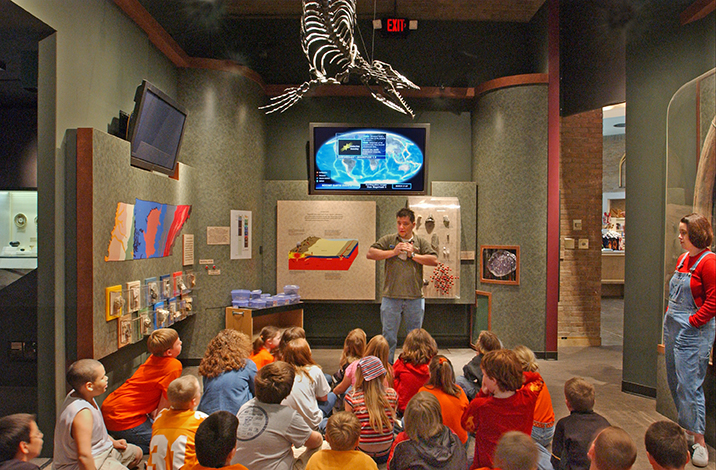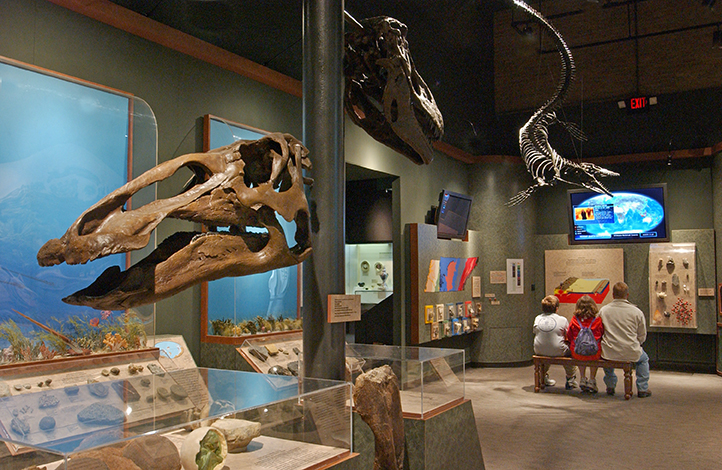A life-size replica of the skeleton of a Cretaceous mosasaur, a large extinct marine reptile, looms overhead, greeting visitors to the Geology & Fossil History of Tennessee gallery.
Exhibits include hundreds-of-millions-of-years-old fossils, more recent Ice Age fossils, and ongoing accounts of present day geological and climatic events.
The exhibit begins with an introduction to minerals, the building blocks of rocks, and a screen with a live feed of Earth Bulletin—a program from the American Museum of Natural History in New York, featuring earth science news and recent events, including earthquakes, volcanoes, and climate, which shape today’s world.
The exhibit continues with a representation of the Geologic Time Scale, the framework for understanding events in Earth’s history. The map of Tennessee is color coded to match the periods of the time scale, and rock samples represent geological formations of those ages from across the state. Above is a screen that gives viewers the option to see computer-animated changes in the world’s continents or to see how remains of once-living animals and plants become fossils.
A series of dioramas trace examples of Tennessee geological history, together with fossils from Tennessee and around the world. Each diorama carefully reflects an environment of living and dying animals and plants. Begin with the Cambrian (541–485.4 million years ago) and Ordovician (485.4–443.4 million years ago) Periods of the Appalachian area, continue to the Silurian and Devonian seen in western Tennessee, followed by the Mississippian exposed in middle Tennessee. Continuing the tour of ancient times and environments, the Pennsylvanian coal swamp diorama shows features of landscapes in the present day Cumberland Plateau. Next is the world-famous Cretaceous Coon Creek fauna of western Tennessee followed by the beautiful fossil leaves of the Eocene of western Tennessee. The spectacular Miocene Age vertebrate fossils of the Gray site in upper East Tennessee are shown with an artist’s interpretation of the landscape at that place and time. Finally, Pleistocene or Ice Age vertebrate remains from the last 15,000 years are shown, including a mammoth tusk fragment from Alaska.
The center of the gallery includes many fossils and casts of dinosaur remains, including the only dinosaur bones found in Tennessee and a collection of authentic dinosaur eggs from China. Casts of dinosaur skulls and footprints give an additional feeling to these amazing animals, and don’t forget the mosasaur overhead, which lived at the same time as the dinosaurs during the Mesozoic Era.
Thomas Broadhead


